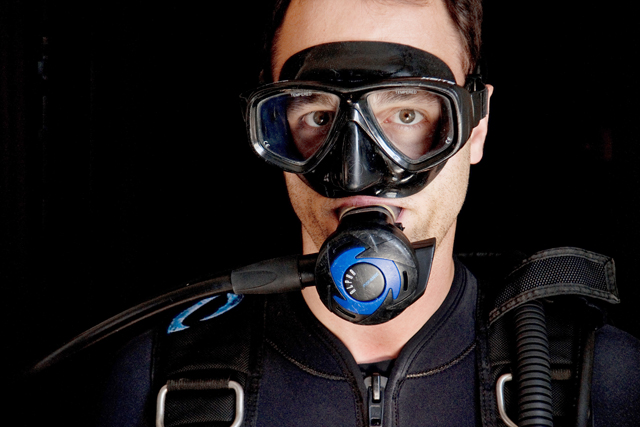Scuba club explores underwater ecosystems
The USU Scuba Club went to Catalina Island over Spring Break, swimming with electric rays and small horn sharks, said Jesse Walker, biology graduate student and current president of the club. Walker said he swam through kelp forests which grow like swaying trees toward the surface, providing environment for schools of fish. He said he loved turning on his back to watch rays of sunlight and diffuse through the tall forests of kelp.
“It was a fantastic environment,” he said.
Now the USU Scuba Club is planning a trip to San Diego’s Laguna Beach in May.
“Some members didn’t get quite enough,” Walker said, speaking of the last trip in March.
Scuba diving allows a person to experience the wealth of diverse ecology not found on dry land, Walker said. He took photos of colorful organisms such as sea urchins and starfish that covered the rocky underwater formations. For underwater photography Walker uses a basic digital camera encased in a special waterproof case.
Walker learned to scuba dive while an undergraduate biology student at Berkeley. He eventually became a teaching assistant for Berkeley’s scientific diving program, teaching students how to use the self-contained underwater breathing apparatus, or scuba, to conduct research with underwater ecosystems.
Walker currently studies natural ecosystems, working in desert environments studying scorpions.
“The Utah desert is about as far as you can get from the shore,” he said.
But there are many places to learn to dive here in northern Utah, including Camper World at Belmont Hot Springs in Tremonton and The Crater at the Homestead resort in Heber. People also learn to dive at Bear Lake during the summertime, Walker said.
Club member Stephanie Cobbold, also a graduate student in biology, learned to dive while at USU. She said it was challenging to learn the sport, but less expensive than she’d thought it would be. Cobbold dove with the Scuba Club on a previous trip to California. She said her best experience was diving in beautiful deep water in front of a famous old monastery at Carmel beach. She said she reached a depth of 102 feet, her deepest dive yet.
“You have to trust the equipment,” she said.
Cobbold sometimes dives with her friend Ryan O’Donnell, also a biology graduate student. O’Donnell recalled one trip he and Cobbold made to Bear Lake, saying it was fun, but far from scenic.
“You couldn’t see far at all under water,” O’Donnell said. “We saw a couple of carp.”
Walker, Cobbold and O’Donnell each said divers must always think about safety. The number one rule of diving, Walker said, is to never hold one’s breath. The regulator feeds the diver air at atmospheric pressure while underwater, he said. If the diver takes a full breath and holds it, the air will expand as he or she swims toward the surface, possibly rupturing capillaries, he said. However, it’s not a problem if one is taught to always breathe normally, he said.
Walker said most recreational divers stay in quite shallow waters, far above 130 feet deep.
“Anything below 130 feet deep is technical diving,” he said.
The high pressure exerted while deep underwater forces more nitrogen into the body’s bloodstream, and if the diver swims directly to the surface without taking time to “decompress,” the nitrogen will form bubbles in the bloodstream. This is a serious problem called “the bends,” Walker said. Recreational divers use charts to know how long to stay underwater at a given depth in order to practice “no-decompression diving,” he said.
Walker said he’s made about 140 dives, and has never had a dangerous experience.
There are two instructors in Logan who will certify students to dive safely, Walker said. The process usually costs less than $300, with equipment rental and resort admission fees included, he said.
–brendon.butler@aggiemail.usu.edu

